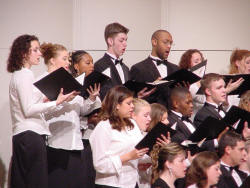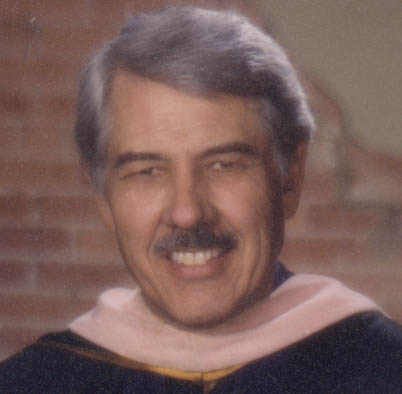|
Concepts of Breathing and Support by For more information about Dr. Jones, visit his faculty web site. Or you may contact him via email. |
Many of you, I am sure, have sung solos at U.I.L. or N.A.T.S., and other contest events, and have had it written on your adjudication sheets: "You need to work on your breathing," or "You need to give more support to the tone." At times, some judges have become so specific as to instruct you to "support from the diaphragm!" WHAT DOES ALL THIS MEAN?!? How should you breathe? What is support? What and where is the diaphragm?
With only a limited analysis we can answer these questions clearly for you.
How
Should We Breathe?
What
is Support?
How
May We Accomplish Support?
How
Should We Breathe?
Breathing may be separated
into two types:
Vegetative breathing: The act of subconsciously controlling inhalation and exhalation. A process that is activated by the ratio of oxygen and carbon dioxide in the blood stream which regulates the involuntary muscles of respiration. Principally, the abdominal diaphragm, an involuntary muscle, which suffices to maintain an oxygen level in the body for life itself.
Forced breathing: The act of consciously controlling the processes of inhalation and exhalation for the purposes of:
-
supplementing the oxygen supply during extreme fatigue
-
for certain practical actions such as blowing out a match, inflating a balloon, etc.
-
*and by closing the thoracic valve (vocal cords), thereby creating a pressure in the thoracic and abdominal cages for certain actions such as speech, singing, lifting, turning over in bed, excrement of bodily wastes, and even crying during infancy.
All of the above actions have been used by you naturally without instructions, all of your life.
* This action has been known
to the medical profession as Valsalva's Maneuver. Discovered
by a Seventeenth Century Italian surgeon, Antonio Valsalva, he
was primarily known for his enormous contributions to research
of the human ear. 
We should consider the terms support and pressure as synonymous.
-
Support is the act (in singing or speaking) of creating a pressure (Valsalva's Maneuver) in the thoracic and abdominal cages.
-
Pressure (support) is accomplished by closing the vocal cords and flexing the muscles of forced expiration.
-
Sound (phonation) is accomplished by creating enough subglotic pressure to overcome the resisting force (myolastic effort) of the vocal cords, thus forcing them to vibrate.
-
Proper phonation (sound) is not accomplished by air flowing over the vocal cords.
-
Good singing (phonation) is accomplished by optimum (just the correct amount) forced effort of the muscles of expiration and the optimum resistance of the vocal cords.
-
Air flow between the cords is inversely proportionate to sound quality. THE LESS AIRFLOW THE BETTER!
How May We Accomplish Support?
Valsalva's Maneuver
Pressure is created by diminishing
the lateral and vertical diameters of the thoracic cage. There are
three positive efforts in which this may be accomplished.
-
The use of the muscles of the ribcage (principally the latissimus dorsi, transverse thoracic, and the internal intercostals) to diminish the lateral diameters.
-
The use of the abdominal group (transverse abdominus, external oblique, internal oblique, and rectus abdominus) to pull the bottom of the ribcage down and in, thereby also diminishing the lateral diameters of the thoracic cage.
-
Simultaneously, flexing the four large muscles of the abdominal group, which compress the abdominal viscera (anything inside the abdominal cavity), and force it up against the diaphragm, the lower wall of the thoracic cage -- thereby diminishing the vertical diameters of the thoracic cavity. Thus, THE ABDOMINAL DIAPHRAGM SERVES ONLY IN A PASSIVE CAPACITY AS THE LOWER WALL OF THE RIBCAGE, and plays no active function in support!
| If you would like to be added to the TSMP Email Mailing List and receive periodic notifications of new articles and updates to this website, then please email TSMP.
The Texas School Music
Project is a source for ideas and information
concerning pedagogical
practices in the music classroom or rehearsal hall. The TSMP is a service provided to
all music specialists by the faculty
of
the Department of Music
at Stephen F. Austin State University. Copyright ? 2002, Department of Music at Stephen F. Austin State University |
